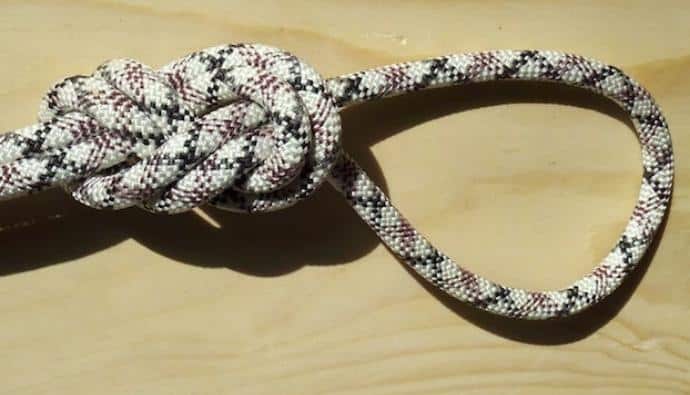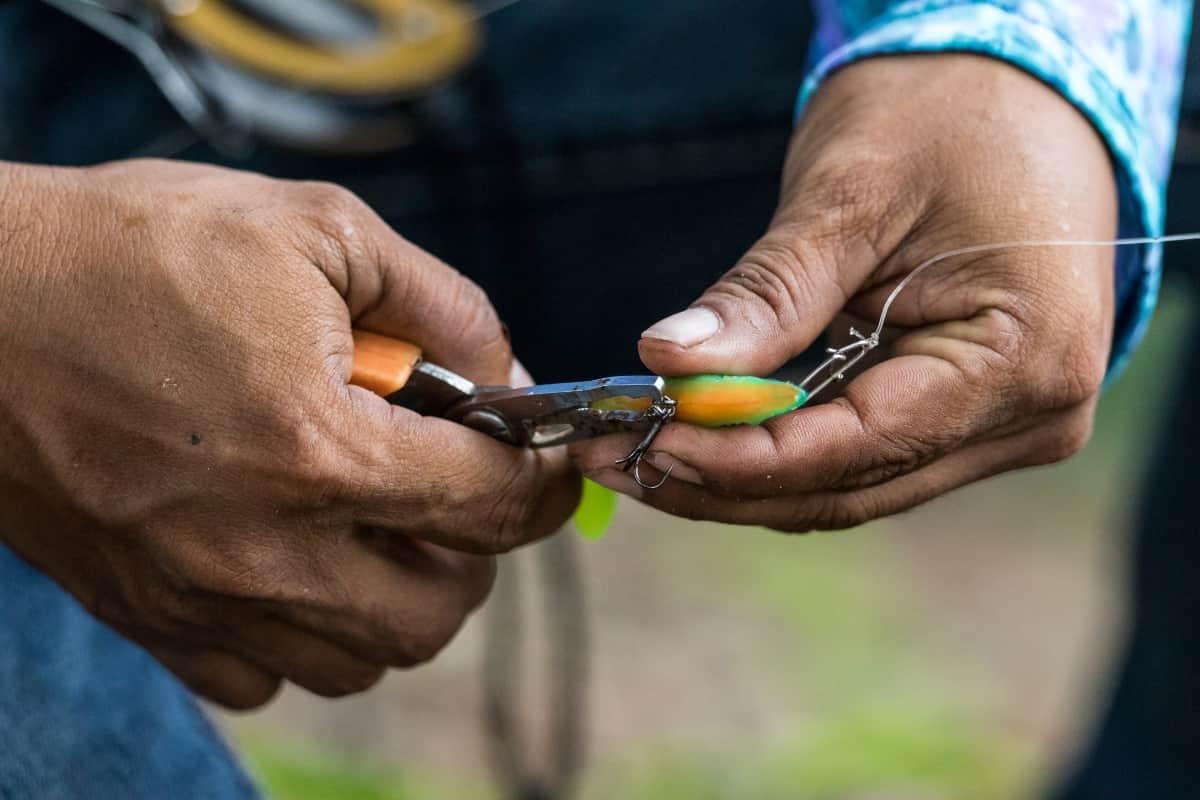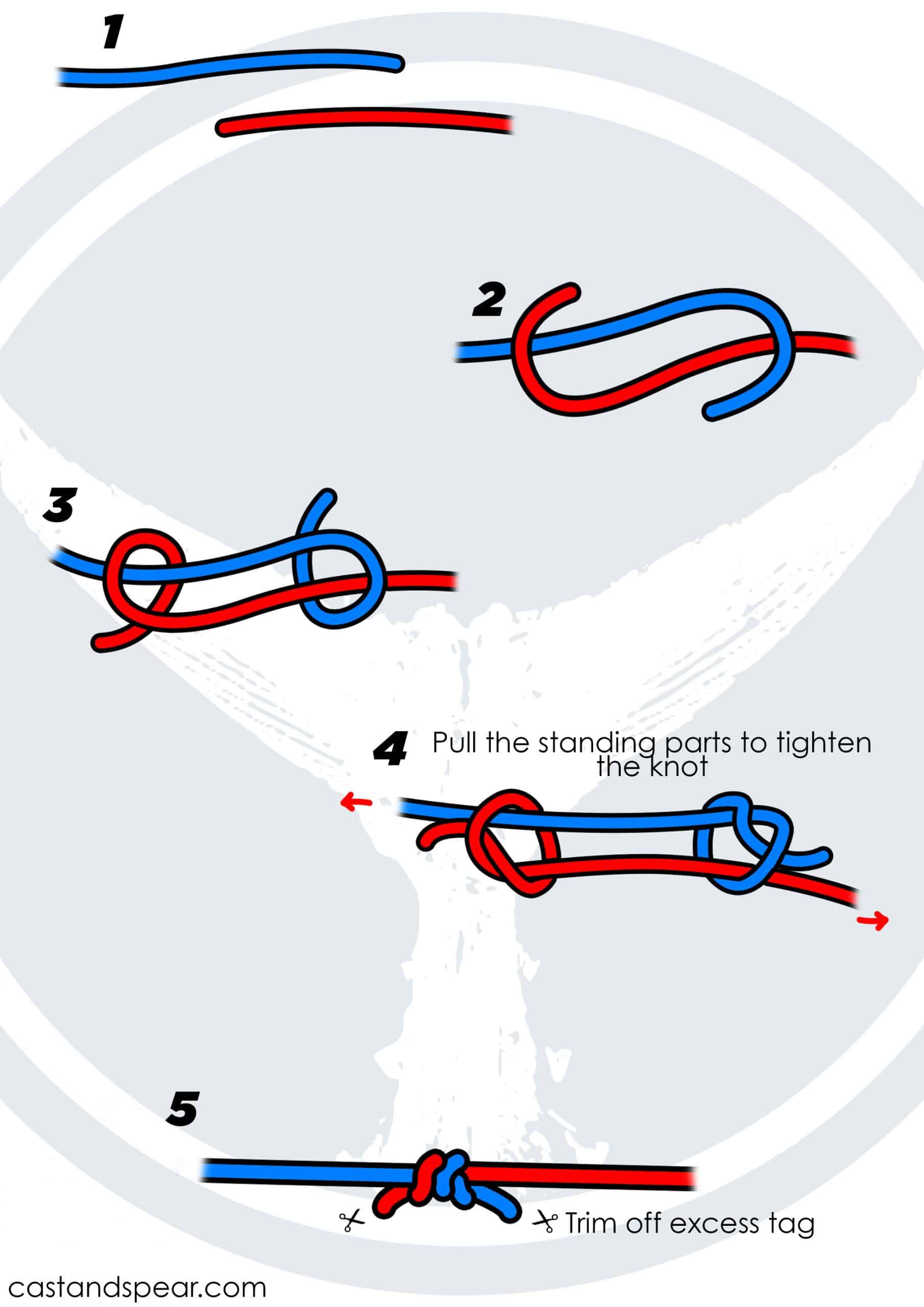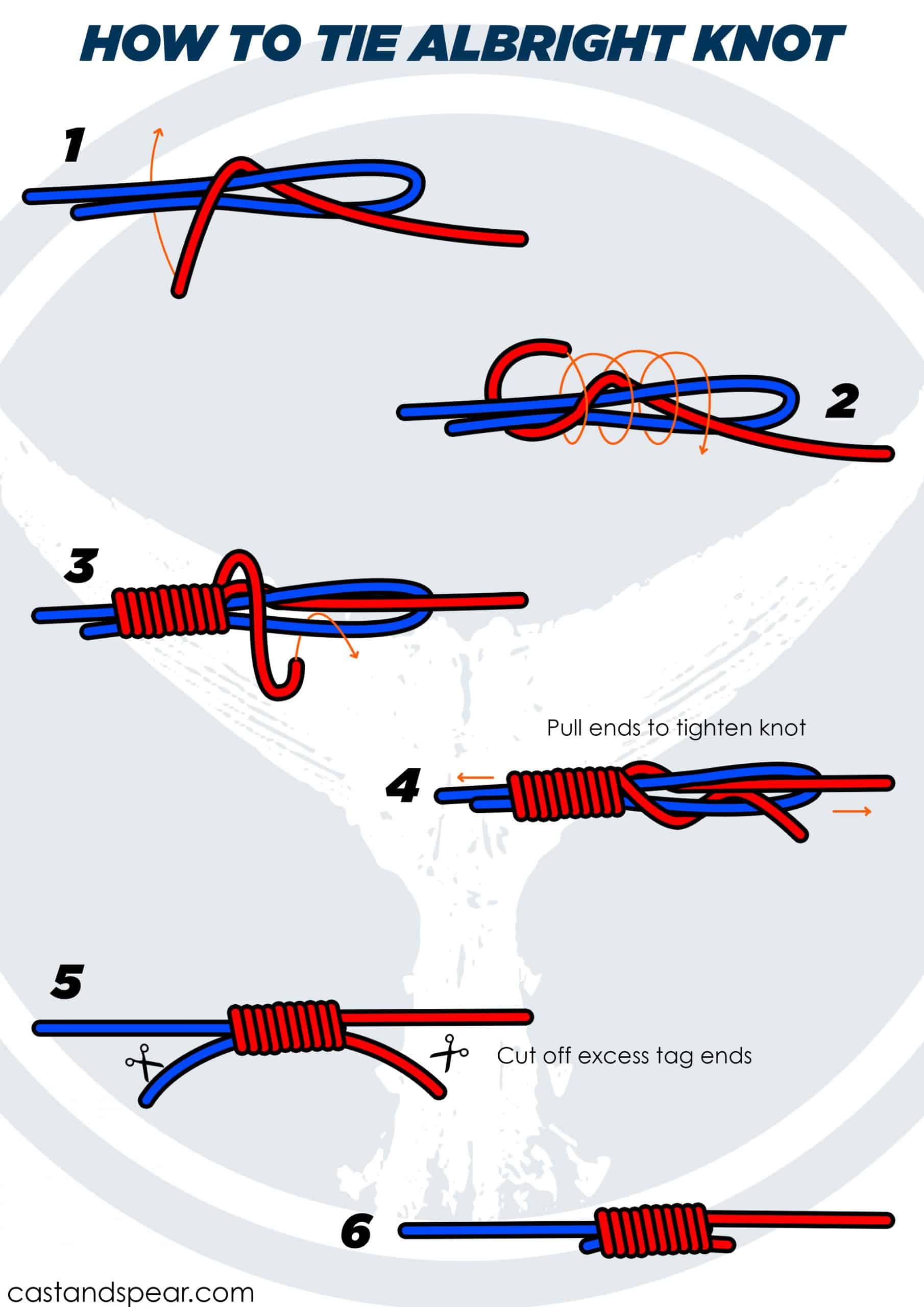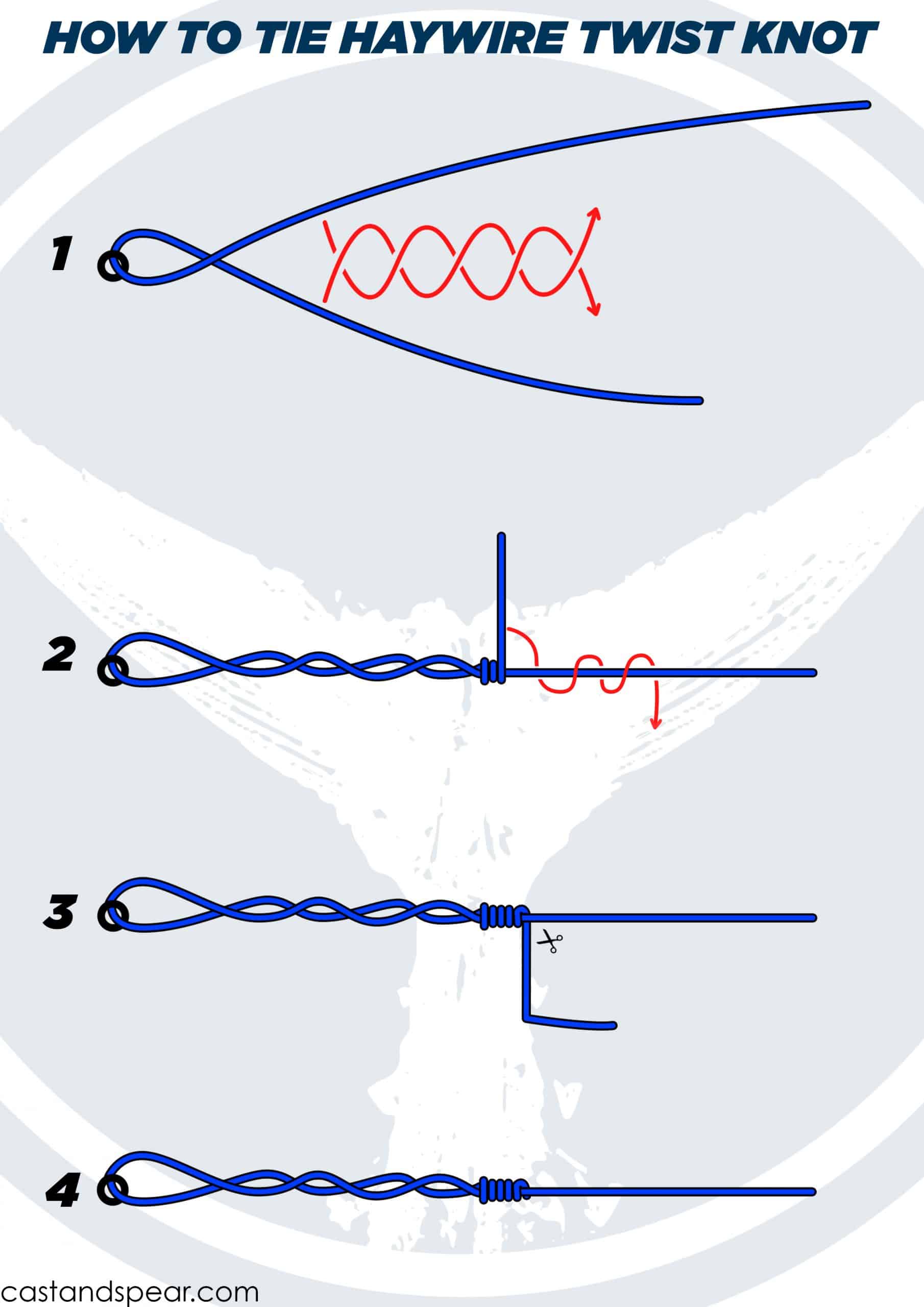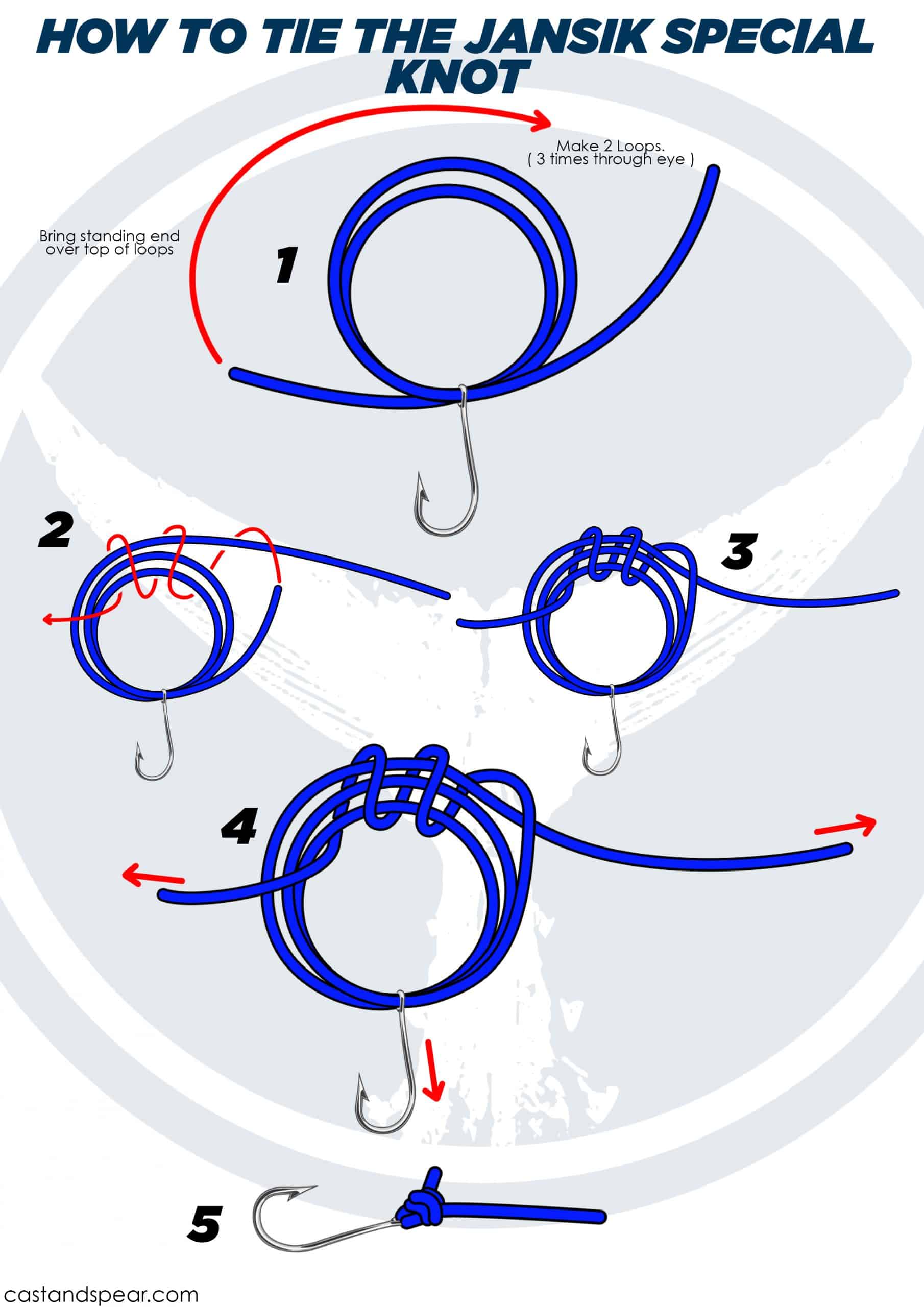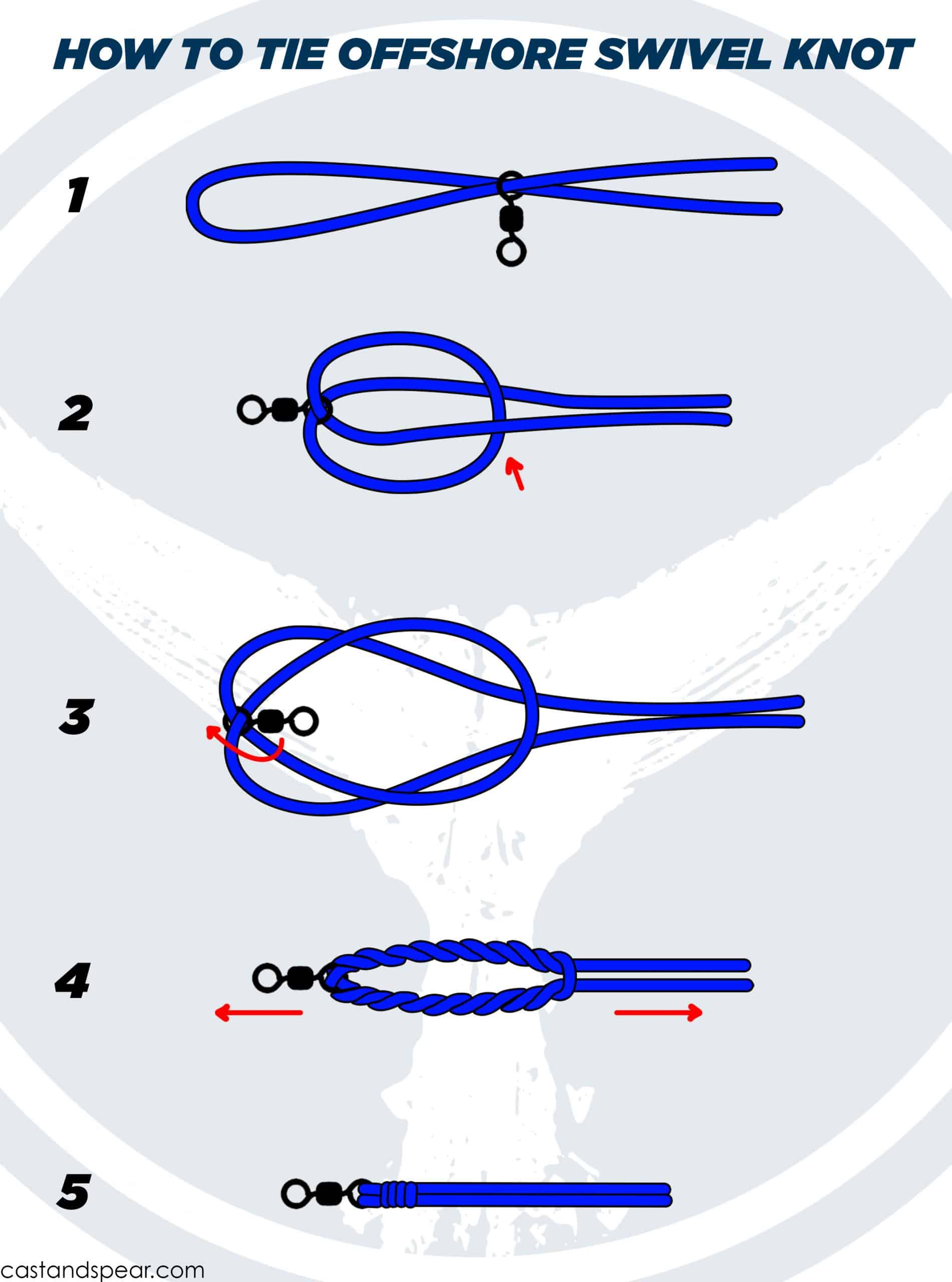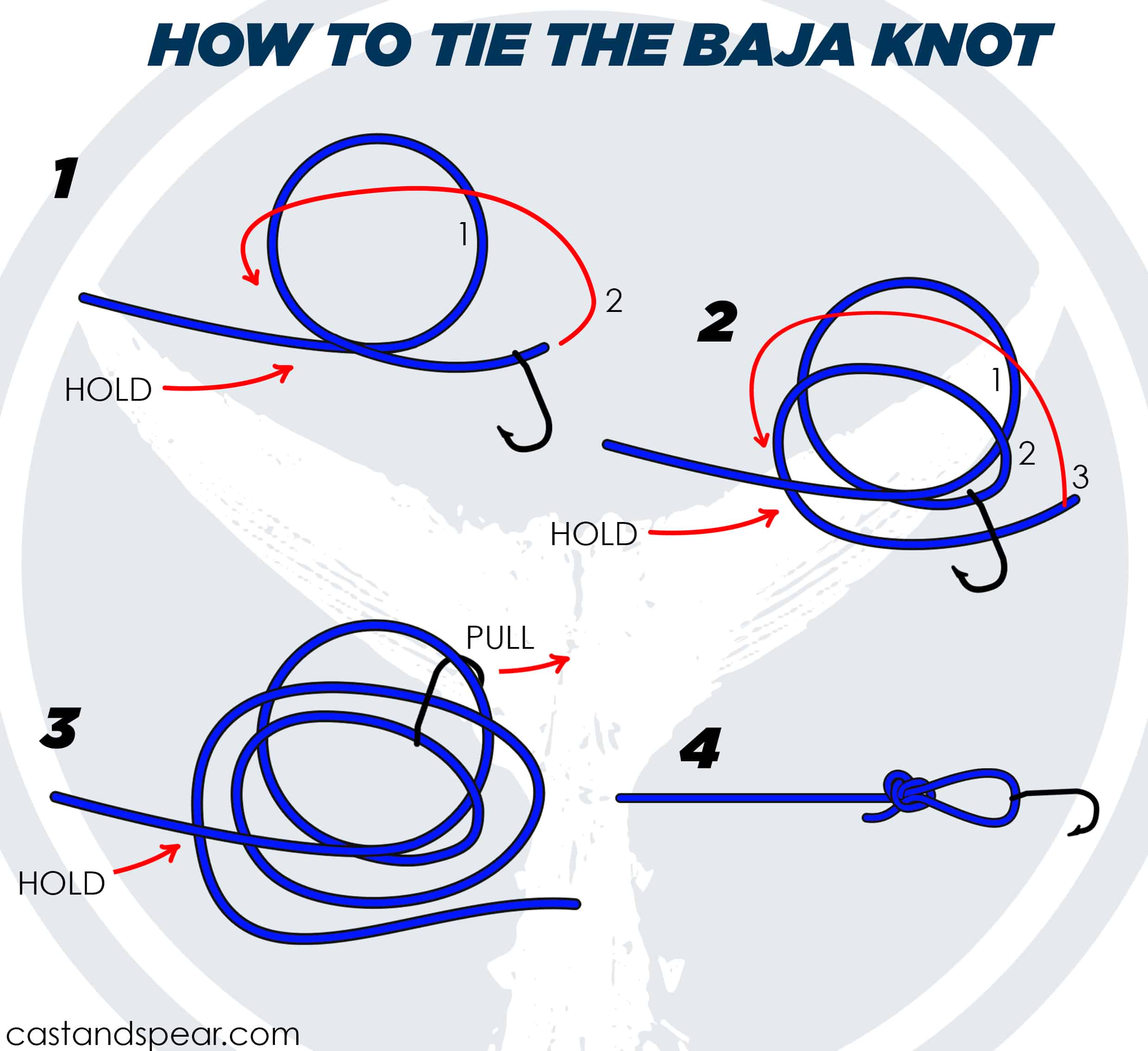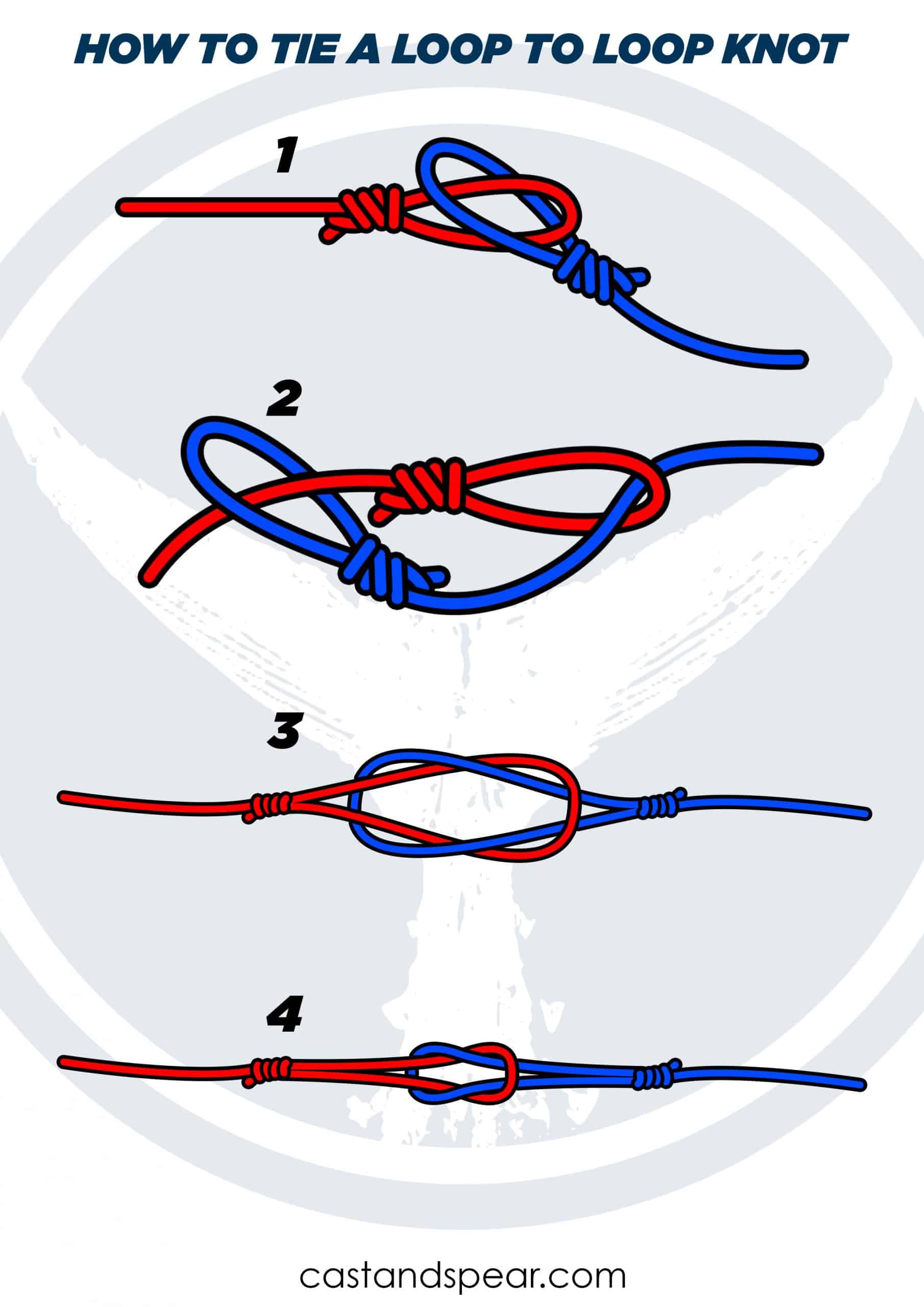If you want to make a non-slip loop at the end of a fishing line, you need to tie a Rapala knot. This will give your fly or lure more action. The name is attributed to the company that popularized it for connecting lures to a mono fishing line, so it is also known as a lure knot or a loop knot for lures.

It would help if you learned how to tie an overhand knot first, though. Follow these instructions on how you can include the overhand in the Rapala knot:
Rapala Knot Tying Instructions
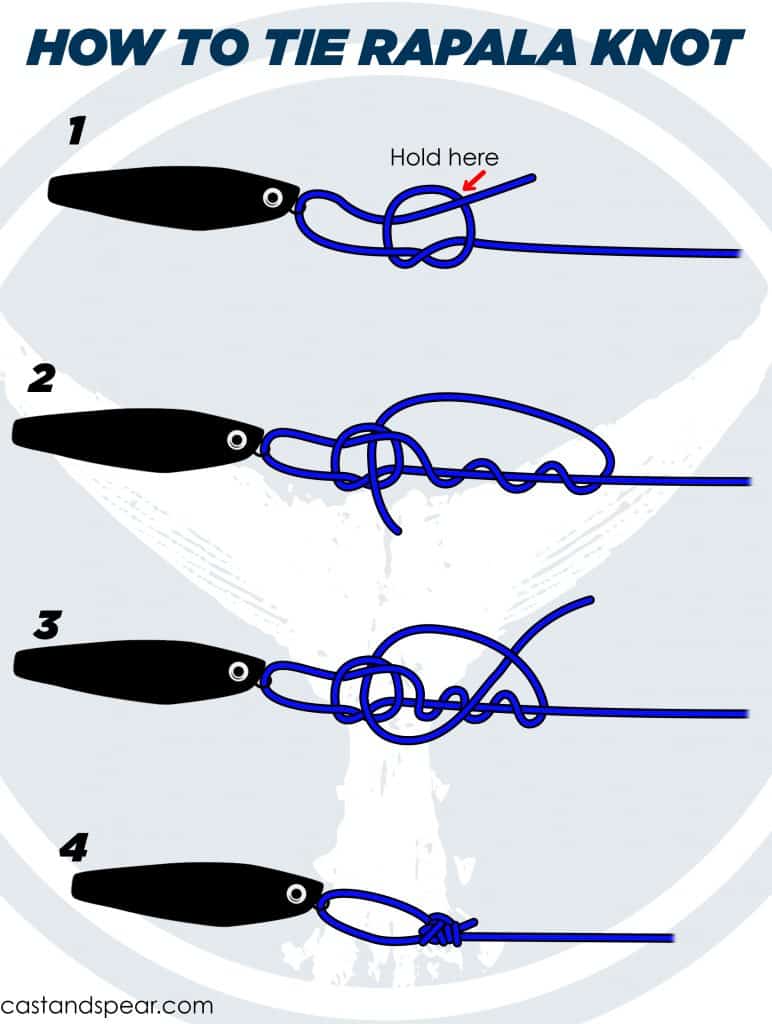
Step 1
Make a loop or loose overhand knot out of your line and thread the tag end of it through the eye of the lure and the loop.
Step 2
Wrap it around the standing line three times.
Step 3
Pass the line through the second loop.
Step 4
Pass the line through the loop you just created.
Step 5
Pull both ends of the line to tighten the non-slip loop knot, and you have a Rapala knot.

Rapala Knot vs Palomar
The Rapala knot is one of the more reliable loop knots for the lure you can make if you know how to tie a loop knot. However, this non-slip loop knot can take some time to tie compared to others, and it also leaves a tag end loose, which can get stuck on debris and weeds. Plus, it does not work on braided lines.
The Palomar knot is easier and faster to tie in comparison to the Rapala knot, but it is not as strong with braid as it is with monofilament or a fluorocarbon fishing line. It’s ideal for tying superlines to leaders or lures. Plus, this non-slip knot can retain almost 100% of the line’s original strength. The Rapala knot, on the other hand, cannot handle big fish as well as the Palomar can.
Rapala Knot vs. Kreh Loop Knot
The Rapala knot is quite similar to the Kreh loop knot, but it has an additional twist in it, which gives it more strength in comparison. However, it also leaves a tag end that can snag in weeds and debris. Additionally, it is also quite tricky to tie compared to the Kreh knot.
The Kreh loop knot is stronger in comparison to the Rapala knot, and its tag endpoints downwards towards the lure rather than upwards. This prevents it from snagging in debris and weeds.
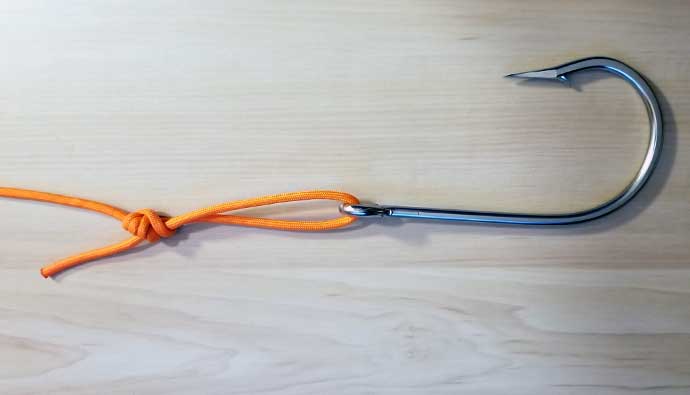
Advantages and Disadvantages
- Rapala loop knot strength: The Rapala knot retains most of the line strength once it is tied.
- The Rapala knot how many turns: The fishing line has to be wrapped three times around the standing line to be firm.
- Rapala knot fluorocarbon: The Rapala loop knot is considered to be one of the best knots for a fluorocarbon leader line. It has an additional twist that adds more strength.
- Rapala knot strength: The Rapala knot can only retain 62% of the original power of the line, and the tag end remains standing, which can be bothersome.
Alternative Knots
Frequently Asked Questions
Tying this knot can be a challenge at first because you need to hold both thin lines at the same time when you are making it.
The best tip is to moisten the line to ensure it does not break when you pull to tighten the knot.
It is called an overhand knot because it includes a loose overhand knot which is fed through the tag end through the eye of the hook or lure.
The knot Rapala is one of the best ones for crankbaits.
You can use the Bimini Twist, the Perfection Loop, Spider Hitch, or the Dropper Loop as alternative knots.
The Bimini Twist is one of the strongest ones, but it is also the most difficult knot to tie. It can withstand the pull of a 1,000-pound fish easily. The instructions to tie one are not challenging to follow.
The Kreh knot, Perfection Loop, and the Canoe Man Loop are useful alternative loop knots to the Rapala.
It will slip if it is not under tension and if it is tied with a nylon rope.




 Facebook
Facebook YouTube
YouTube